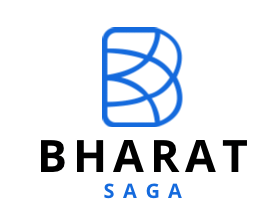The Future Factory Approach
Amidst the ever-changing business environment, the synergy of innovation and user-centric design takes centre stage. Future Factory, spearheaded by the dynamic Geetika Kambli and Jashish Kambli, emerges as a paragon of brilliance in the domains of new product design and user experience. Their groundbreaking contributions to rapid prototyping have reshaped the industry, providing businesses with a seamless route to materialize visionary ideas into market-ready products.
Image source: freepik
Understanding the Synergy of User Experience and New Product Design
At the heart of Future Factory’s success lies a profound understanding of the symbiotic relationship between user experience and new product design. Rapid prototyping, their core methodology, is not just a means to an end; it’s a strategic approach that seamlessly integrates innovative design and unparalleled user experience. By amalgamating these elements, businesses can create products that not only meet but exceed user expectations.
The Strategic Journey from Concept to Market Excellence
Future Factory’s approach to rapid prototyping and new product design is a meticulously crafted journey encompassing several pivotal stages:
1. Research and Proof-of-Concept Prototype:
The odyssey commences with exhaustive research to pinpoint the problem statement. This research serves as the bedrock for the proof-of-concept prototype, an initial iteration aimed at evaluating its ability to address the identified issue. Despite the absence of a physical model, this phase facilitates the early identification and resolution of potential challenges, ensuring a solid foundation for subsequent stages.
2. Look-Alike Prototyping:
Once the proof-of-concept is validated, the focus shifts to user experience. Look-alike prototyping delves into the nuances of user interface, ergonomics, and overall user-friendliness. This phase meticulously refines the design, aligning it seamlessly with user expectations. By prioritizing user experience, Future Factory ensures that the design resonates profoundly with the end-users, fostering a deep sense of connection.
3. Work-Like Stage of Mechanical Engineering:
Simultaneously, experts delve into the technical intricacies, concentrating on the core functionalities of the product. Rigorous testing and prototyping refine the design further, ensuring optimal functionality and reliability. This stage is where technical brilliance converges with user-centricity, creating products that are not only innovative but also intuitive and reliable.
4. Final Mechanical Engineering Prototype:
Upon successful validation, the look-alike and work-like prototypes coalesce into a minimum viable version. Attention to detail and precision in this phase are paramount, guaranteeing that the final product is not just market-ready but also an embodiment of exceptional user experience and innovative design.
5. In-House Validation Testing:
The conclusive phase involves manufacturing small batches for in-house and field testing. This cost-effective validation process rigorously assesses the product’s quality and reliability, ensuring it meets the highest industry standards. Any final adjustments made at this stage are meticulously tailored to enhance user experience, making the product not just functional but also delightful to use.
Conclusion: Crafting Excellence Through User-Centric Design
In the dynamic landscape of rapid prototyping and new product design, Future Factory stands tall, weaving innovation and user-centricity into the very fabric of their work. By choosing Future Factory as your design partner, you are not merely embracing innovation; you are elevating your product design to a realm where user experience reigns supreme. Experience the Future Factory advantage – where groundbreaking design meets unparalleled user experience, crafting a future where products are not just used but cherished.
